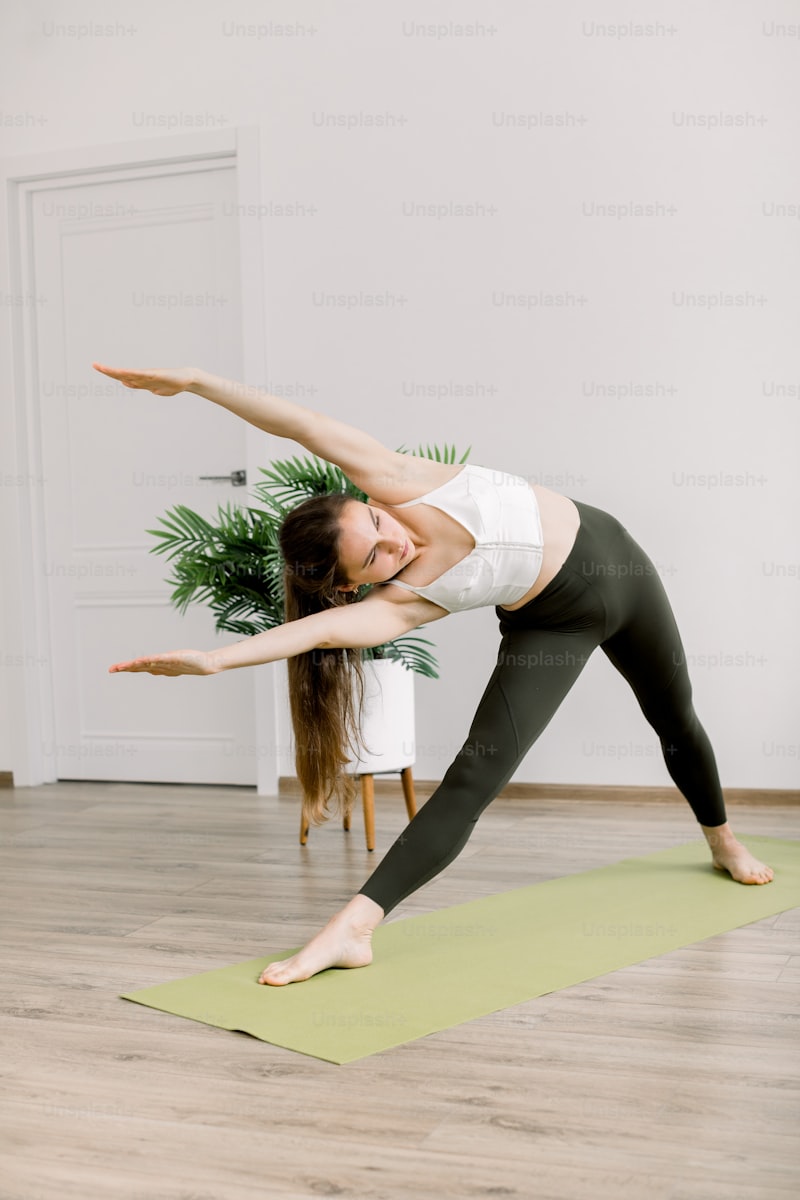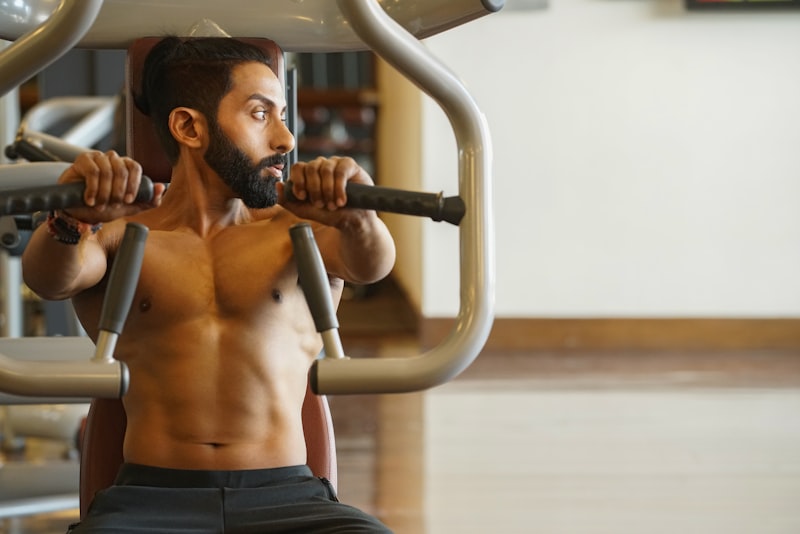One of the key principles of using yoga to build physical resilience lies in its ability to enhance both strength and flexibility simultaneously. Unlike some forms of exercise that focus solely on bulking up muscles or improving cardiovascular endurance, yoga takes a holistic approach. It engages muscles through various poses (asanas) that not only build strength but also improve flexibility, creating a balanced foundation for resilience.
Take the Warrior Pose, for instance. In this pose, you ground yourself like a warrior preparing for battle, stretching your legs while keeping your upper body strong and steady. It challenges your muscles to hold firm yet remain flexible—a metaphor for resilience in itself.
Yoga also teaches us to breathe consciously and deeply—a practice that extends beyond the mat. Deep breathing floods your body with oxygen, invigorating cells and enhancing endurance. This technique becomes invaluable during times of stress or physical exertion, helping you stay calm and collected while your body keeps pushing forward.
Another aspect of yoga’s resilience-building power lies in its ability to improve balance and proprioception. Balancing poses like Tree Pose or Eagle Pose require concentration and steady breathing. As you hold these poses, you not only strengthen your core and stabilizing muscles but also enhance your mind-body connection. This heightened awareness translates into better coordination and responsiveness in everyday activities, reducing the risk of injury.
Moreover, yoga fosters a sense of inner calm and mental resilience. Through meditation and mindfulness practices incorporated into yoga sessions, you learn to observe your thoughts without judgment and manage stress effectively. This mental fortitude complements the physical strength gained through yoga, creating a comprehensive resilience toolkit.
Unlocking Inner Strength: Harnessing Yoga for Physical Resilience
Imagine yoga as your secret weapon against the stresses of everyday life. It’s not just about twisting yourself into a pretzel; it’s about finding balance and resilience within yourself. Yoga teaches us to listen to our bodies, to breathe through discomfort, and to find peace amidst chaos.
One of the key benefits of yoga is its ability to build physical resilience. Through a combination of poses (asanas) that strengthen muscles and improve flexibility, yoga prepares your body to handle whatever life throws your way. From downward dog to warrior pose, each movement challenges your body while also calming your mind.
But yoga is more than just a physical practice; it’s a mindset. It teaches us to embrace discomfort as a path to growth and to find strength in moments of stillness. By focusing on the breath and being present in each movement, yoga cultivates resilience that extends far beyond the mat.
Picture yourself like a tree in a storm, rooted deeply into the ground. Yoga helps you build that kind of resilience—strong yet flexible, able to bend without breaking. It’s about finding your center and staying grounded no matter what storms come your way.
Yoga as a Foundation: Strengthening Body and Mind for Resilience
Imagine starting your day with a practice that not only stretches your muscles but also calms your mind, setting a resilient tone for whatever comes your way. Yoga, often perceived as just a physical exercise, goes beyond mere poses – it’s a powerful tool for building resilience in both body and mind.
At its core, yoga encourages us to connect with our breath, grounding us in the present moment. This mindful awareness is key to resilience, as it helps us navigate challenges with clarity and composure. Through regular practice, yoga enhances flexibility and strength, making our bodies more adaptable to stressors that life throws our way.
The beauty of yoga lies in its accessibility. Whether you’re a beginner or seasoned practitioner, there’s a practice that suits your needs. From gentle Hatha yoga to dynamic Vinyasa flows, each style offers unique benefits that contribute to overall resilience. It’s not about perfection in the poses but rather about the journey of self-discovery and growth.
Physiologically, yoga has been shown to reduce cortisol levels – the stress hormone – promoting a sense of calm and relaxation. This reduction in stress is vital for resilience, as it allows us to bounce back from adversity more effectively. Moreover, the mindfulness cultivated in yoga helps in recognizing and managing our reactions to stressors, fostering emotional resilience.

Think of yoga as building a strong foundation – much like constructing a sturdy house. The deeper you dig into your practice, the stronger your foundation becomes. Over time, this foundation supports you in facing life’s challenges with grace and fortitude. It’s not about avoiding difficulties but about having the inner strength to endure and grow from them.
In essence, yoga is more than a series of poses; it’s a lifestyle that nurtures resilience from the inside out. By integrating breath, movement, and mindfulness, yoga cultivates a holistic approach to strengthening both body and mind. Embrace yoga as your foundation for resilience, and watch as it transforms your life, one breath at a time.
Building Endurance through Yoga: A Pathway to Physical Resilience
Imagine your body as a fortress, fortified by the practice of yoga. Building endurance through yoga isn’t just about holding poses; it’s about cultivating a deep, lasting strength that emanates from within. Unlike high-impact workouts that can leave you drained, yoga gently but powerfully builds your stamina over time. It’s like constructing a sturdy bridge brick by brick, ensuring it can withstand any storm.
In yoga, each pose serves as a building block, strengthening not only your muscles but also your mental endurance. Whether you’re holding a Warrior II pose or flowing through Sun Salutations, every movement contributes to your overall physical resilience. It’s akin to sculpting a masterpiece; each chisel refines your body’s ability to endure and thrive.
What makes yoga unique is its holistic approach to endurance. It’s not just about the physical exertion; it’s about synchronizing your breath with movement, creating a harmonious flow that builds stamina organically. It’s like conducting an orchestra where every breath and stretch harmonizes into a symphony of endurance.
Moreover, yoga adapts to your body’s needs, allowing you to progress at your own pace. Whether you’re a beginner or seasoned yogi, there’s always room to challenge yourself further. It’s like embarking on a hike up a mountain trail; each step strengthens your resolve to reach greater heights.
Beyond the physical benefits, yoga cultivates mental resilience. The focus required in each pose teaches you to quiet the mind and push through discomfort. It’s akin to navigating through turbulent waters with unwavering calmness, knowing that every challenge is an opportunity to grow stronger.
From Asanas to Resilience: Integrating Yoga into Daily Fitness
Yoga, with its roots tracing back centuries, offers more than physical exercise. It’s a practice that harmonizes body, mind, and spirit. The beauty lies in its adaptability—you can start with simple asanas (poses) and gradually deepen your practice as you build resilience.
One of the key aspects of yoga is its focus on breath. In every pose, from downward dog to tree pose, the emphasis is on mindful breathing. This isn’t just about oxygenating the body; it’s about calming the mind, reducing stress, and increasing mental resilience. Imagine starting your day with a few minutes of focused breathing—setting a tone of calm determination for whatever challenges lie ahead.
The physical benefits of yoga are profound. It improves flexibility, strength, and balance, making everyday movements easier and safer. Whether you’re reaching for something on a high shelf or bending down to tie your shoelaces, you’ll notice the difference.
Beyond the physical, yoga cultivates mental resilience. It teaches you to stay present in the moment, to acknowledge discomfort without letting it overwhelm you. Just as holding a challenging pose requires concentration and endurance, these skills translate into everyday life—you become better equipped to handle stressors with grace and clarity.
Moreover, yoga is for everyone. It doesn’t matter if you’re a seasoned athlete or new to fitness; there are variations and modifications for every level. It’s about honoring your body’s unique strengths and limitations while gently pushing boundaries.
Incorporating yoga into your daily routine doesn’t mean hours on end. Even a few minutes of mindful practice can make a significant difference. It’s not just exercise; it’s a way to reconnect with yourself amidst the hustle and bustle of daily life.
So, whether you’re rolling out your mat at sunrise or unwinding with a gentle flow before bed, integrating yoga into your fitness routine is a journey of self-discovery and resilience-building.
Mindful Movement: Using Yoga to Enhance Physical Resilience
Imagine yoga as a journey, where each pose and breath works synergistically to build physical resilience. It’s like creating a strong fortress for your body, where flexibility and strength intertwine seamlessly. Through deliberate movements and controlled breathing, yoga teaches us to listen to our bodies and respond with care.
The beauty of yoga lies in its adaptability. Whether you’re a beginner or a seasoned practitioner, there’s always a pose or variation that suits your current physical state. It’s a practice that grows with you, offering challenges that are both invigorating and achievable.
One of the key elements of yoga is its ability to reduce stress. By focusing on the present moment and letting go of tension, practitioners can enhance their resilience to daily stressors. This mental clarity extends beyond the mat, fostering a sense of calm and balance in everyday life.
Physical resilience isn’t just about endurance; it’s also about recovery. Yoga promotes circulation and flexibility, helping muscles recover faster after exertion. This means fewer aches and pains, allowing you to stay active and agile throughout your day.
Moreover, yoga encourages mindful breathing, which boosts oxygen flow and improves lung capacity. It’s like giving your body a fresh infusion of energy with every breath. This enhanced vitality translates into improved overall resilience, making you feel more capable of tackling whatever life throws your way.
Yoga’s Secret Weapon: Transforming Stress into Strength and Resilience
Imagine stress as a heavyweight you lift at the gym. At first, it feels daunting, but with practice, you grow stronger and more capable. Yoga works similarly but on a mental and emotional level. Through mindful breathing and deliberate movements, it teaches you to face stress head-on, rather than avoid it. This approach helps in building mental muscles that can tackle life’s challenges with grace.
One of yoga’s secrets lies in its ability to activate the parasympathetic nervous system—the body’s natural relaxation response. When you practice yoga, especially gentle styles like restorative or yin yoga, your body shifts from fight-or-flight mode to rest-and-digest mode. This shift not only reduces the production of stress hormones like cortisol but also enhances your overall sense of well-being.

Moreover, yoga cultivates resilience by fostering a deep connection between your body and mind. As you hold poses and focus on your breath, you learn to observe discomfort without reacting impulsively. This mindfulness practice translates into everyday life, enabling you to respond to stressors with greater calmness and clarity.
Think of yoga as your personal resilience coach. It teaches you to bend without breaking, much like a sturdy tree swaying in the wind. Each time you step onto the mat, you’re not just stretching muscles; you’re strengthening your ability to adapt and thrive in the face of adversity.
Flexibility and Beyond: Yoga’s Role in Boosting Physical Resilience
Imagine your body as a finely tuned instrument. Just as a musician maintains their instrument to produce beautiful melodies, yoga helps you tune and strengthen your body from within. Through a series of poses and movements, yoga targets muscles, joints, and tendons, enhancing their flexibility and strength. This not only improves your range of motion but also builds resilience against injuries and everyday physical stresses.
But yoga is not merely about touching your toes or holding a challenging pose. It’s about cultivating a deep connection between your mind and body. Each movement is synchronized with breath, promoting mindfulness and reducing the detrimental effects of stress hormones like cortisol. This mind-body harmony is key to building resilience, as it equips you with the ability to adapt and bounce back from life’s inevitable challenges.
Moreover, yoga acts as a holistic practice that addresses both physical and mental aspects of resilience. As you flow through different poses, you engage various muscle groups while simultaneously calming the mind. This dual benefit is akin to strengthening the roots of a tree during a storm – the deeper the roots, the better the tree withstands strong winds.
Beyond the physical benefits, yoga fosters resilience by promoting balance and stability. It teaches you to find equilibrium, not only on the yoga mat but also in everyday life. This newfound stability translates into better posture, coordination, and overall body awareness, which are essential components of resilience.
In essence, yoga goes beyond flexibility; it transforms your body into a resilient fortress capable of withstanding life’s challenges. By integrating yoga into your routine, you embark on a journey towards greater physical resilience, enhanced well-being, and a profound connection between your body and mind. So, whether you’re a seasoned yogi or just starting out, embrace yoga as more than just a practice – it’s a path to enduring strength and vitality.
Frequently Asked Questions
What role does breathwork play in building physical resilience through yoga
Learn how breathwork enhances physical resilience in yoga by optimizing oxygen intake, improving stamina, and calming the nervous system, fostering endurance and overall well-being.
How often should I practice yoga to see improvements in physical resilience
Discover how often you should practice yoga to enhance physical resilience with our concise guide.
Are there specific yoga sequences or routines recommended for beginners focusing on resilience
Discover effective yoga sequences designed for beginners to enhance resilience. These routines emphasize gentle poses and mindful breathing techniques to build physical and mental strength gradually.
What are the key yoga poses for enhancing physical resilience
Discover essential yoga poses that enhance physical resilience. Learn key poses like Downward-Facing Dog for strength and flexibility, Warrior Poses for stability, and Bridge Pose for spinal health. These poses improve endurance, balance, and overall physical resilience.
Can yoga help prevent injuries and enhance recovery
Discover how yoga can aid injury prevention and speed up recovery. Learn about its benefits in enhancing flexibility, strength, and mindfulness, which contribute to overall physical resilience and quicker healing.


